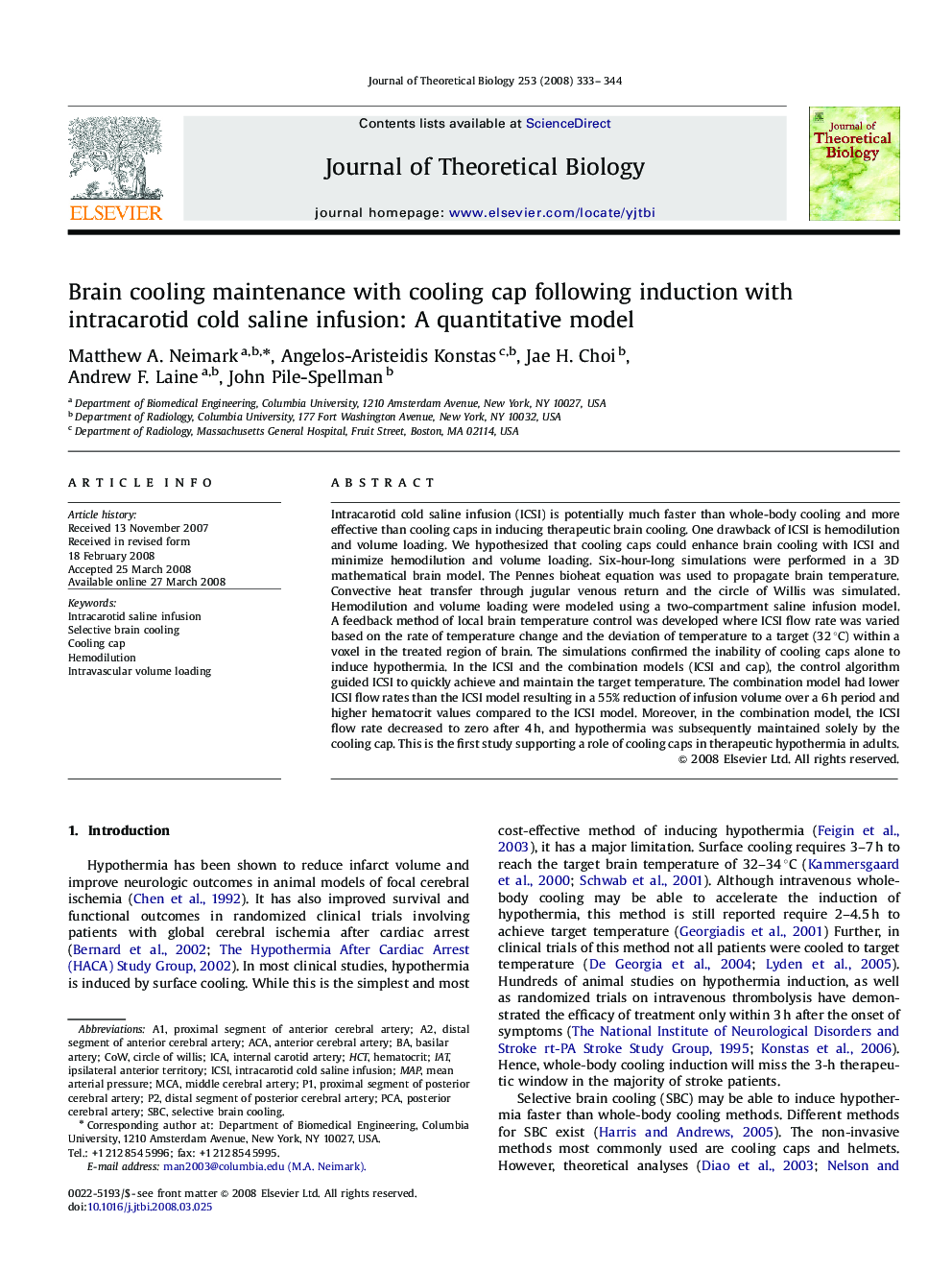| کد مقاله | کد نشریه | سال انتشار | مقاله انگلیسی | نسخه تمام متن |
|---|---|---|---|---|
| 4498462 | 1318983 | 2008 | 12 صفحه PDF | دانلود رایگان |
عنوان انگلیسی مقاله ISI
Brain cooling maintenance with cooling cap following induction with intracarotid cold saline infusion: A quantitative model
دانلود مقاله + سفارش ترجمه
دانلود مقاله ISI انگلیسی
رایگان برای ایرانیان
کلمات کلیدی
ICAACAMCASBCHCTIATPCA - PCAselective brain cooling - خنک کننده مغناطیسی انتخابیCircle of Willis - دایره ویلیسbasilar artery - شریان basilaranterior cerebral artery - شریان مغزی قدامیmiddle cerebral artery - شریان مغزی میانیPosterior cerebral artery - شریان مغزی پشتیinternal carotid artery - شریان کاروتید داخلیmean arterial pressure - فشار متوسط شریانیICSI - میکرواینجکشنmap - نقشهhematocrit - هماتوکریتHemodilution - همودیالیتCow - گاو
موضوعات مرتبط
علوم زیستی و بیوفناوری
علوم کشاورزی و بیولوژیک
علوم کشاورزی و بیولوژیک (عمومی)
پیش نمایش صفحه اول مقاله

چکیده انگلیسی
Intracarotid cold saline infusion (ICSI) is potentially much faster than whole-body cooling and more effective than cooling caps in inducing therapeutic brain cooling. One drawback of ICSI is hemodilution and volume loading. We hypothesized that cooling caps could enhance brain cooling with ICSI and minimize hemodilution and volume loading. Six-hour-long simulations were performed in a 3D mathematical brain model. The Pennes bioheat equation was used to propagate brain temperature. Convective heat transfer through jugular venous return and the circle of Willis was simulated. Hemodilution and volume loading were modeled using a two-compartment saline infusion model. A feedback method of local brain temperature control was developed where ICSI flow rate was varied based on the rate of temperature change and the deviation of temperature to a target (32 °C) within a voxel in the treated region of brain. The simulations confirmed the inability of cooling caps alone to induce hypothermia. In the ICSI and the combination models (ICSI and cap), the control algorithm guided ICSI to quickly achieve and maintain the target temperature. The combination model had lower ICSI flow rates than the ICSI model resulting in a 55% reduction of infusion volume over a 6 h period and higher hematocrit values compared to the ICSI model. Moreover, in the combination model, the ICSI flow rate decreased to zero after 4 h, and hypothermia was subsequently maintained solely by the cooling cap. This is the first study supporting a role of cooling caps in therapeutic hypothermia in adults.
ناشر
Database: Elsevier - ScienceDirect (ساینس دایرکت)
Journal: Journal of Theoretical Biology - Volume 253, Issue 2, 21 July 2008, Pages 333-344
Journal: Journal of Theoretical Biology - Volume 253, Issue 2, 21 July 2008, Pages 333-344
نویسندگان
Matthew A. Neimark, Angelos-Aristeidis Konstas, Jae H. Choi, Andrew F. Laine, John Pile-Spellman,